| Ch 1. Particle General Motion | Multimedia Engineering Dynamics | ||||||
|
Position, Vel & Accel. |
Accel. vary w/ Time |
Accel. Constant | Rect. Coordinates | Norm/Tang. Coordinates | Polar Coordinates |
Relative Motion |
|
| Curvilinear Motion: Rect. Coord. | Case Intro | Theory | Case Solution | Example |
| Chapter |
| - Particle - |
| 1. General Motion |
| 2. Force & Accel. |
| 3. Energy |
| 4. Momentum |
| - Rigid Body - |
| 5. General Motion |
| 6. Force & Accel. |
| 7. Energy |
| 8. Momentum |
| 9. 3-D Motion |
| 10. Vibrations |
| Appendix |
| Basic Math |
| Units |
| Basic Dynamics Eqs |
| Sections |
| eBooks |
| Dynamics |
| Fluids |
| Math |
| Mechanics |
| Statics |
| Thermodynamics |
| ©Kurt Gramoll |
|
|
||||||||||||||||
|
If an object moves in a curved path, it is said to be in curvilinear motion. It is useful to use vectors to describe the motion of a curved path. |
||||||||||||||||
| Position |
||||||||||||||||
 Position Vector |
To define the position of a point P, select a fixed coordinate system with an origin O. The position of the point P is defined by a position vector, r, connecting O to P. If P is in motion relative to O, then the position vector will change with time, |
|||||||||||||||
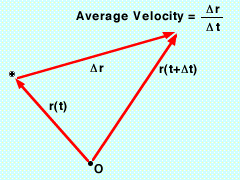 Position and Velocity |
Average Velocity |
|||||||||||||||
|
Here, r(t) denotes the position of P at time t. If r(t + Δt) denotes the position at time t + Δt, then Δr represents the change in position, Δr = r(t + Δt) - r(t) The average velocity is the overall change of position over the overall change of time, Average velocity = Δr / Δt |
||||||||||||||||
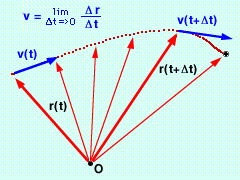 Instantaneous Velocity |
Instantaneous Velocity |
|||||||||||||||
|
Usually, instantaneous velocity is needed, not average velocity. To determine the instantaneous velocity, take the average velocity over smaller and smaller increments of time, |
||||||||||||||||
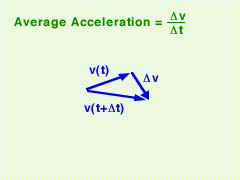 Acceleration |
Acceleration |
|||||||||||||||
|
If v(t) denotes the velocity at time t and v(t + Δt) denotes the velocity at time t + Δt, then Δv = v(t + Δt) - v(t) Average acceleration = Δv/Δt |
||||||||||||||||
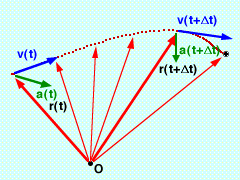 Instantaneous Acceleration |
Instantaneous Acceleration |
|||||||||||||||
|
To determine the instantaneous acceleration, take the average acceleration over smaller and smaller increments of time, giving a = dv/dt |
||||||||||||||||
| Rectangular Coordinates |
||||||||||||||||
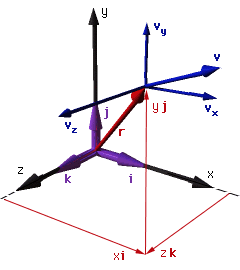 Rectangular Coordinate System |
Let the origin O reside at the origin of the Cartesian axis. Resolve the position vector r(t) into rectangular x, y, and z components, r = xi + yj + zk |
|||||||||||||||
| Velocity |
||||||||||||||||
|
Differentiate to find velocity, giving |
||||||||||||||||
| Acceleration |
||||||||||||||||
|
To find the acceleration, take a derivative of the velocity, which gives, Rectangular motion is useful if ax depends only on t, x, and/or vx (likewise for ay and az). Note that the equations describing the motion in each coordinate direction are identical to those of linear motion, as denoted in the Position, Velocity, Acceleration section. |
||||||||||||||||
| 2-D Projectile Problems |
||||||||||||||||
Most problems involve projectiles with constant gravity acceleration in only the y direction. In this special case, the rectilinear motion equations become (assumes up is positive y), |
||||||||||||||||
|
||||||||||||||||


